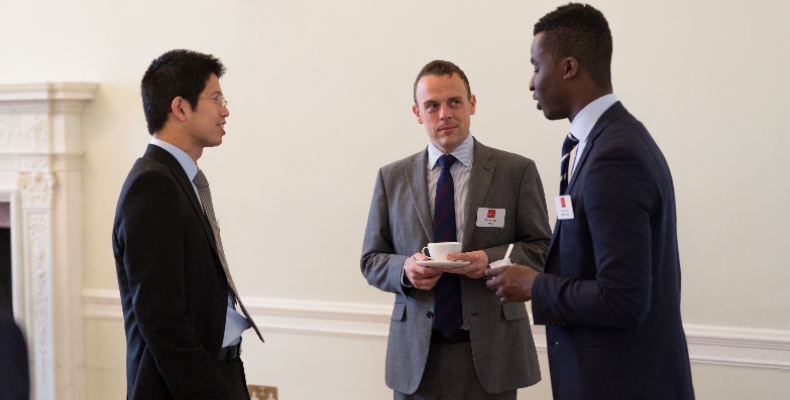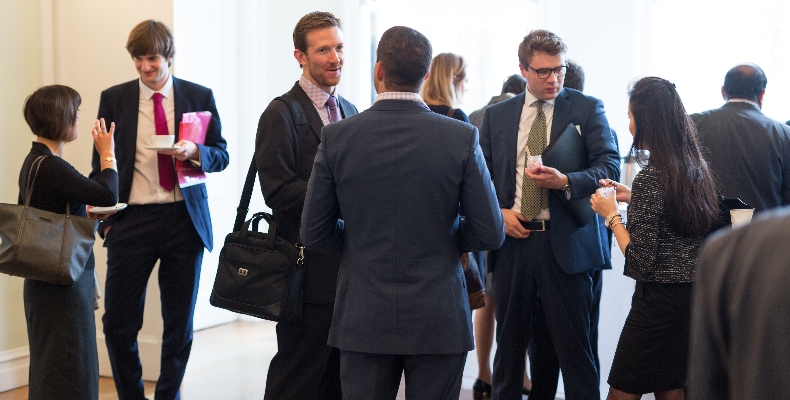Driving commercial and political engagement between Asia, the Middle East and Europe
Driving commercial and political engagement between Asia, the Middle East and Europe
Driving commercial and political engagement between Asia, the Middle East and Europe

The infrastructure gap in the Asia Pacific region is huge. Whilst the Asian Development Bank (ADB) predicts that between 2010 and 2020 Asia will need to spend approximately US$8 trillion in order to just maintain current levels of growth, according to PwC, the Asia Pacific region will need to spend US$5.36 trillion annually on infrastructure by 2025 (representing nearly 60 per cent of the world’s total). PwC estimates that Asia’s infrastructure market will grow by seven per cent to eight per cent annually over the next decade.
These were some of the opening remarks made by Mark Rathbone, Advisory Asia Pacific Capital Projects & Infrastructure Leader PwC Singapore, at the conference ‘The Road Ahead for Infrastructure in Asia‘, which was held in association with PwC, at Asia House on Tuesday 14 July.

CEO of Asia House Michael Lawrence introduced the speakers at the conference. Image copyright: Andy Tyler Photography
“There is a big drift of capital and investment money to Asia because of the region’s potential. There is a huge infrastructure gap there,” Rathbone told the audience of business executives.
Rathbone said the gap in infrastructure in emerging Asia right now was water, sanitation, communications, manufacturing, extraction, technology, power and transport, such as roads, heavy rail, high speed rail and urban rail. However, the focus had not yet turned to social infrastructure such as hospitals, public schools and homes. The gap was most pronounced in government infrastructure, he added.
“That’s how it was during the industrial revolution. The focus at that time was on that kind of infrastructure in the UK and USA too. Education, healthcare and housing came later,” he said.
He said better infrastructure would provide a better quality of life in the region, which was important as many people in the Asia Pacific were migrating to cities, making the infrastructure gap more acute.
In the last three decades the urban population of China has risen by more than 500 million people. 51 per cent of the population of Indonesia now lives in urban areas. Seventy per cent of the global population is expected to live in urban areas by 2050, according to The Organisation for Economic Co-operation and Development (OECD.)
“Even second tier cities in China are quite big with populations of 10 million. Indonesia has many cities of six to seven million. To meet the growing needs, not just cities, but buildings need to be smarter and infrastructure needs to be more efficient,” he said.
Improved infrastructure would also enhance the trade competitiveness of Asia Pacific countries, a matter which will become more important once the ASEAN bloc is formed in 2015.

There were ample opportunities for networking at the conference. Image copyright: Andy Tyler Photography
Trade between China and ASEAN could foster substantial growth if the two markets become better connected, both in terms of transport as well as in terms of communications, he said. Improved infrastructure will reduce trade costs and help the region become more competitive on the world stage. High quality infrastructure and greater connectivity would also lead to increased efficiencies especially in supply chain management, he pointed out. One of the aims of constructing the ASEAN bloc was to get rid of trade barriers and facilitate more efficient transfer of goods and people – and for that infrastructure and connectivity were essential, he said.
According to the Global Competitiveness Report 2013-2014, the Philippines ranks 96 out of 148 in terms of how developed its infrastructure is; China ranks 48; and Indonesia, which spends far more of its GDP on real estate and apartments than the infrastructure needed for sustained growth, ranks 61. However, Malaysia fares better ranking at 29, while Singapore ranks second.
“Jakarta has no public transport and huge traffic jams. It can take two to three hours to reach anywhere. Transport and utilities are a massive focus area in Asia now,” Rathbone said. “As people migrate to cities you need better transport in cities and you need more efficiency to transport goods within countries and across borders as countries grow. You also need power and water as economies grow. Water contamination is a leading source of illness in China. About 89 per cent of rivers are seriously polluted,” he said.
“The world’s biggest e-commerce market is shifting to Asia and to China in particular,” he added, explaining that despite being relatively well wired, there was much more room to grow the reach of mobile and broadband connectivity in the region. In China only 20 to 25 per cent of small businesses have Internet connections, compared to 75 per cent in the US, for example.
However, a lot of the money needed to fund infrastructure in Asia was locked in pension funds and sovereign wealth funds and the ability of banks and governments to fund projects is limited because of new restrictions under Basel III. “The balance between risk and reward is not there,” Rathbone said.
He pointed out that investing in UK infrastructure generated a nine to 11 per cent return, whereas the return in Asia, which was considered more risky, owing to a poor regulatory framework, only promised 11 to 12 per cent returns. “These projects in Asia require better returns for private sector capital,” he explained.
But he said government-to-government initiatives sometimes solved the funding issues.
“The Chinese Government is undertaking a strategic government-to-government initiative to develop infrastructure in Myanmar as part of its strategic trade route. It is not getting any return at the project level but there are wider aims. Japan is investing heavily in Jakarta, but in that case the money is flowing back to Japan,” he explained.
China’s share of global infrastructure spending is expected to rise from 22 per cent in 2012 to 37 per cent in 2025.
“The Asian Infrastructure Investment Bank (AIIB), a Chinese initiative, which 57 nations have signed up to, is a game changer in the region,” Rathbone said. “We hope it will help fill the large infrastructure gap in the region and promote first world principles and transparency.”
He said public-private partnerships were another solution to the funding issue.
He then went on to speak about China’s recreation of the ancient Silk Road as a new Silk Road for international trade connecting China with South Asia, Europe and Southeast Asia, which he said was another positive development for infrastructure development in the region. Fifty agreements have already been signed for projects along this route. Plans were in place for a high speed rail from China to Russia for example, he said. The introductory speech was followed by a panel discussion.
One of the panellists Peter Budd, Global Aviation Business Leader at Arup, commented that the New Silk Road was “a visionary piece of infrastructure that will lay the foundations of the region. Infrastructure can’t just be serving the individual parts of a city, it has to look to the future,” he said. “If you look at how long the new single runway is taking to come off the ground in London, that is precisely the kind of thing that the Asia Pacific region needs to avoid. They have to be strategic,” he added.
He said that social media was one way that developers in countries such as China were being held to account, ensuring infrastructure was not just built but well maintained and operated. “There will be more investment in clean coal,” he added.

Three panellists took part in a discussion about infrastructure in the Asia Pacific region after the introductory speech. Pictured from left are Peter Budd, Global Aviation Business Leader, Arup, Rachael De Renzy Channer, Head of Strategy Implementation, Schneider-Electric and Prem Mahi, Development Director – Power Sector, Mott McDonald. Image copyright: Andy Tyler Photography
Another panellist Prem Mahi, Development Director – Power Sector, Mott MacDonald, said “UK coal stations are very inefficient compared to the Chinese ones. Coal and gas are there to stay in Asia. China has made the technological jump. We have not. They are much more efficient than us when it comes to carbon savings,” he said. But he warned that a lot of money that Chinese, Japanese and Koreans were investing in Asia was now being invested in Africa, Middle East, Eastern Europe and Latin America so there was “competition for money.” He added that funding by banks was coming under greater scrutiny to ensure it was sustainable and brought community benefits. He pointed out that in Asia, contracts were often based on mutual trust rather than written contracts, which presented a big cultural difference. Another issue was political interference as often large infrastructure projects lasted more than one political term.
This conference was held at Asia House in association with PwC to expand on PwC’s report Infrastructure development in Asia Pacific (APEC): The next 10 years. To read the report click here.

Delegates networked and enjoyed coffee and pastries before and after the conference. Image copyright: Andy Tyler Photography
naomi.canton@asiahouse.co.uk
Don’t miss the unique opportunity to listen to a speech and take part in a Q&A session with Thai Finance Minister Sommai Phasee on Friday 17 July.
For more information and to register click here. Places are still available.
